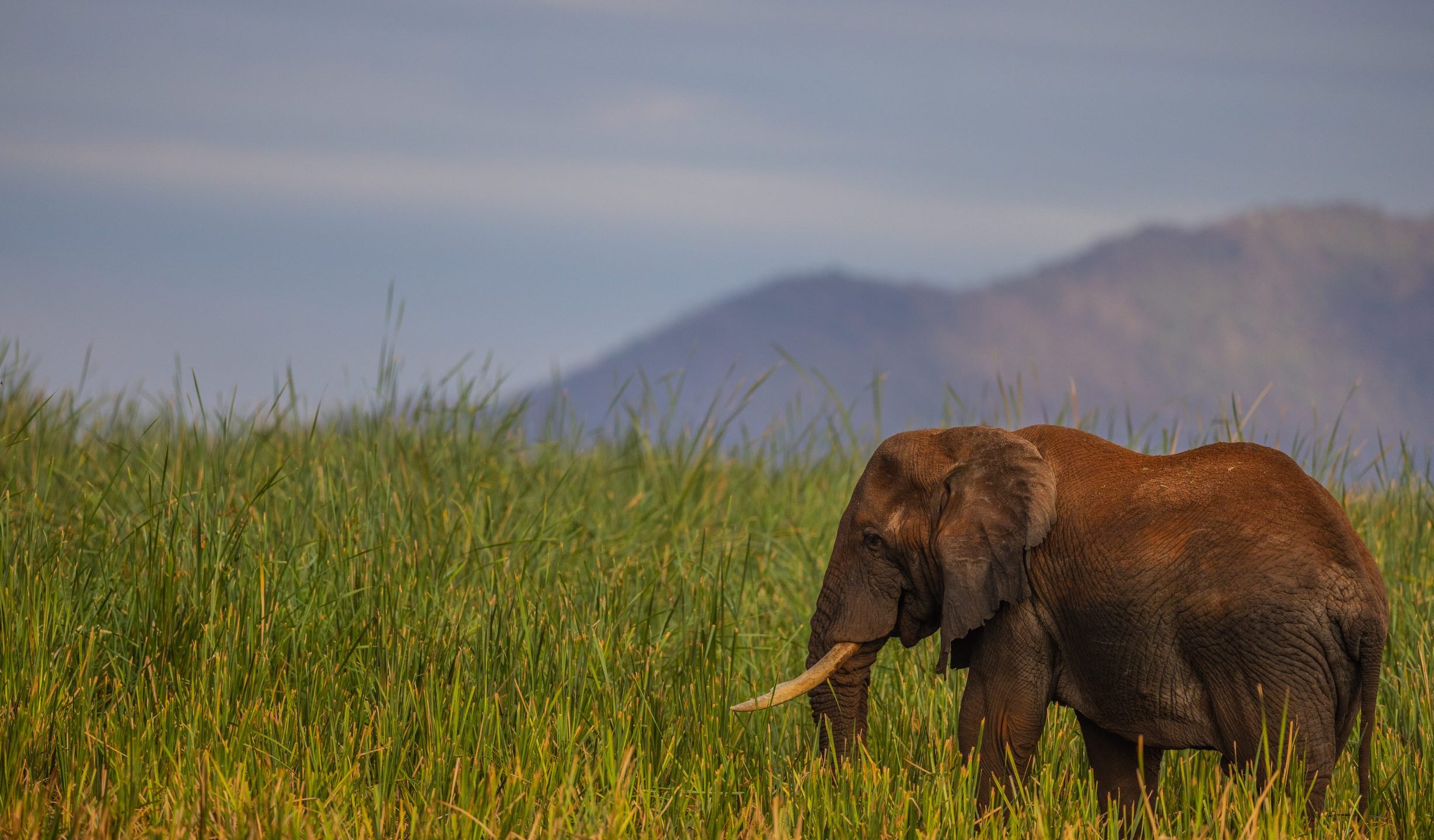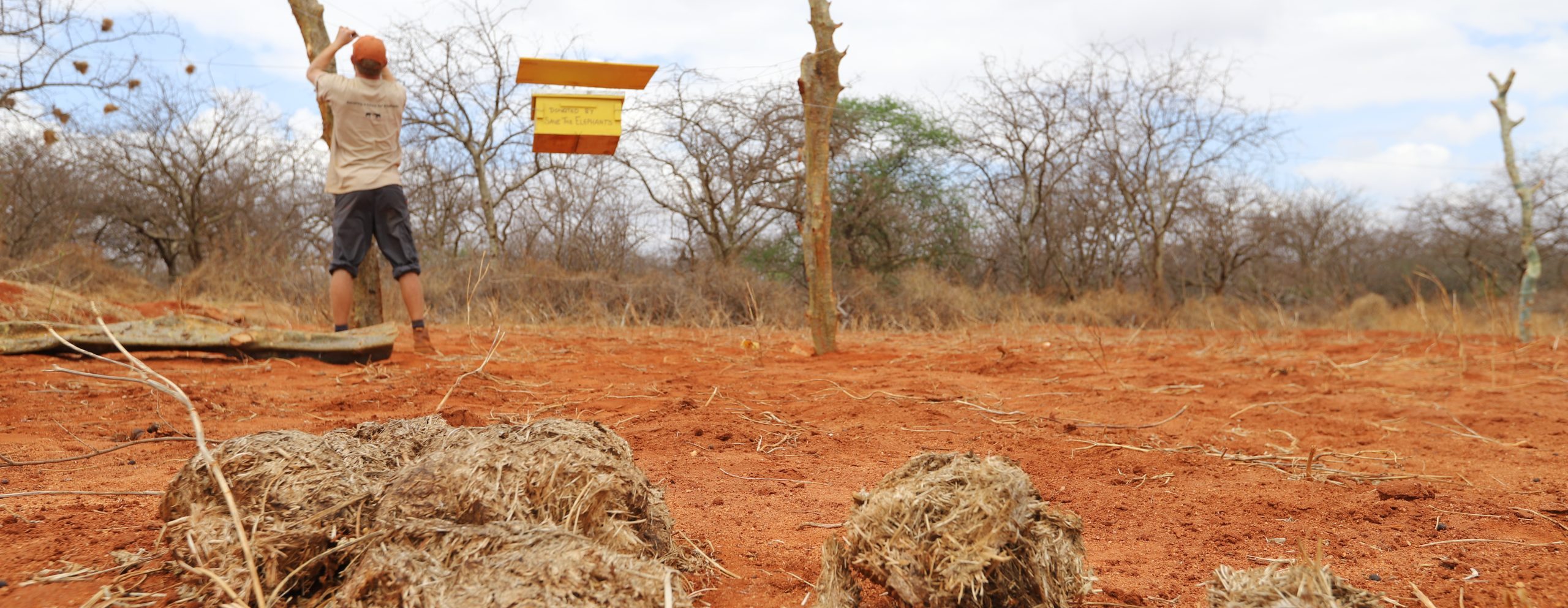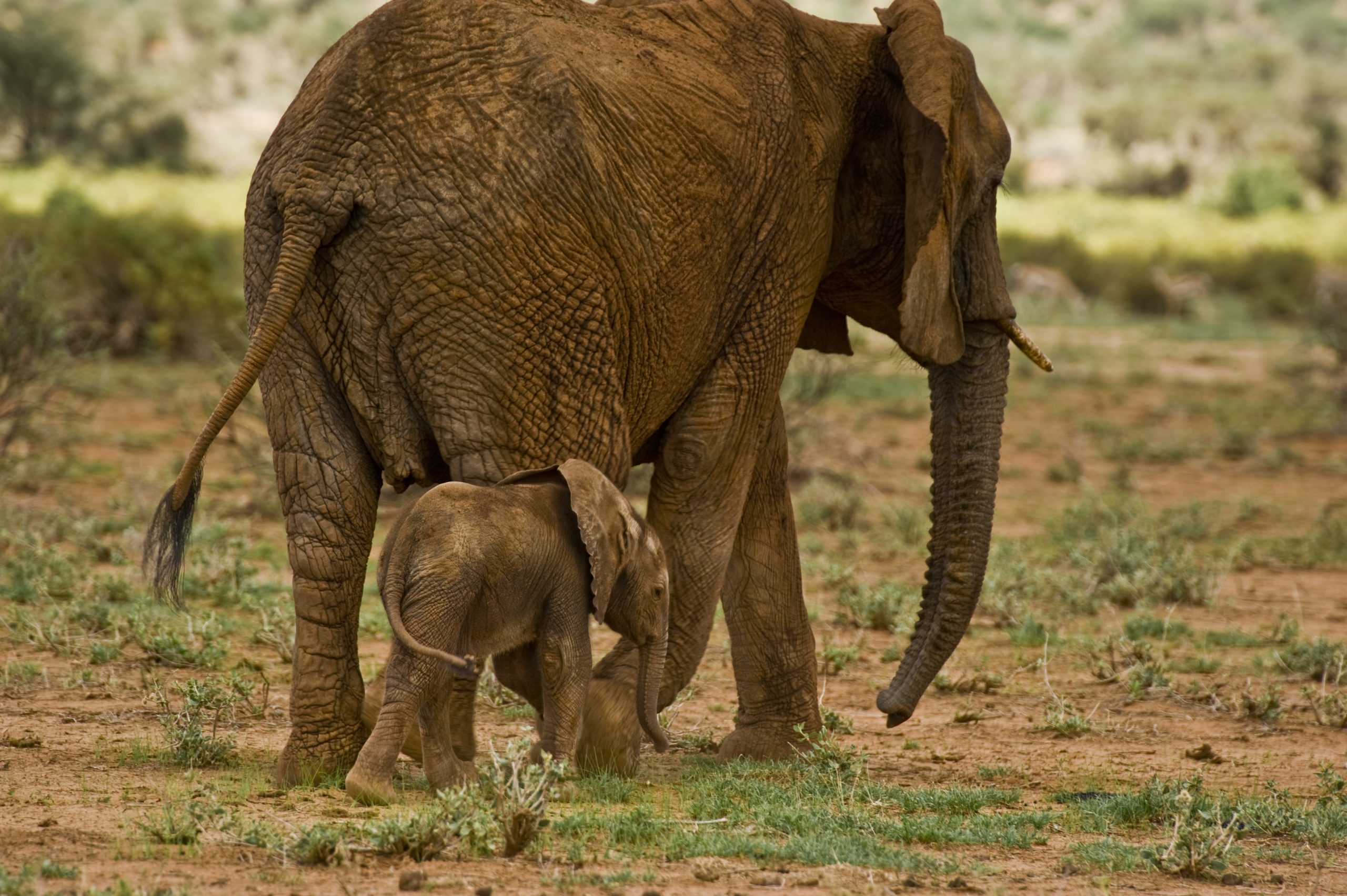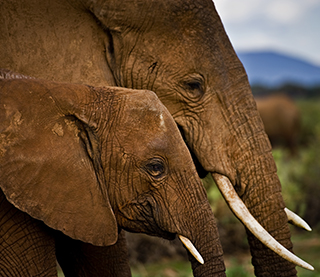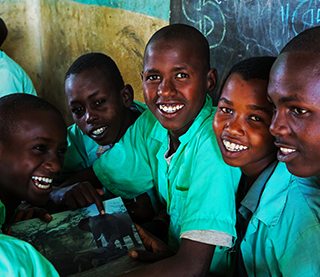As a pioneer in tracking and GPS technology, STE began by trying to deal with known notorious elephants, changing their habits one at a time. Our Geofencing project put an imaginary fence line around certain farms in Laikipia. Once crossed, the collar would send out a text message, much the same way you get a text from a friend saying they are right round the corner. Empowered by this knowledge, farmers would mobilize locals to chase the elephant away, long before he came anywhere near their farms. As true sentient beings, the collared crop raiders learnt the new boundaries with frightening speed, never to disturb the farmers of the area again.
This worked well for the lone bulls with collars, but what about marauding herds of hungry elephants barging into farms?
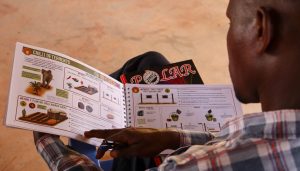
© Meha Kumar
STE’s Elephants and Bees Project builds on our discovery of elephants’ natural fear of honeybees to help deter them from damaging fields of crops. By building a fence with wire connecting all the beehives, any large disturbance shakes the wire, letting out angry bees. Although elephants have impervious skin, baby elephants can potentially be stung to death by a swarm of African honeybees. Elephants also have vulnerable orifices, like their trunks and ears, which bees can easily sting through causing much harm and irritation.
Behind these fences, farmers can safely plant their crops, finally breathing a sigh of relief after years of clashes with elephants.
The bees in turn bring with them added rewards: pollination services which boost farm production, and of course honey, which rural farmers can both eat and sell, exponentially improving the economic potential of their farms, and the region.
We know the solutions we’ve presented are two tried and tested ones out of many. Therefore, STE is gathering data on all possible solutions and the conditions in which they work best, summarised neatly in a Human Elephant Conflict toolbox relevant to the Kenyan context.
Finding ways of preventing this is key to developing a more tolerant relationship between elephants and man.
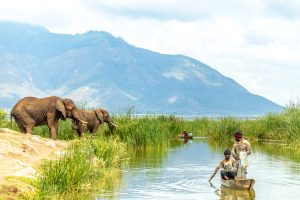
© Anthony Ochieng


